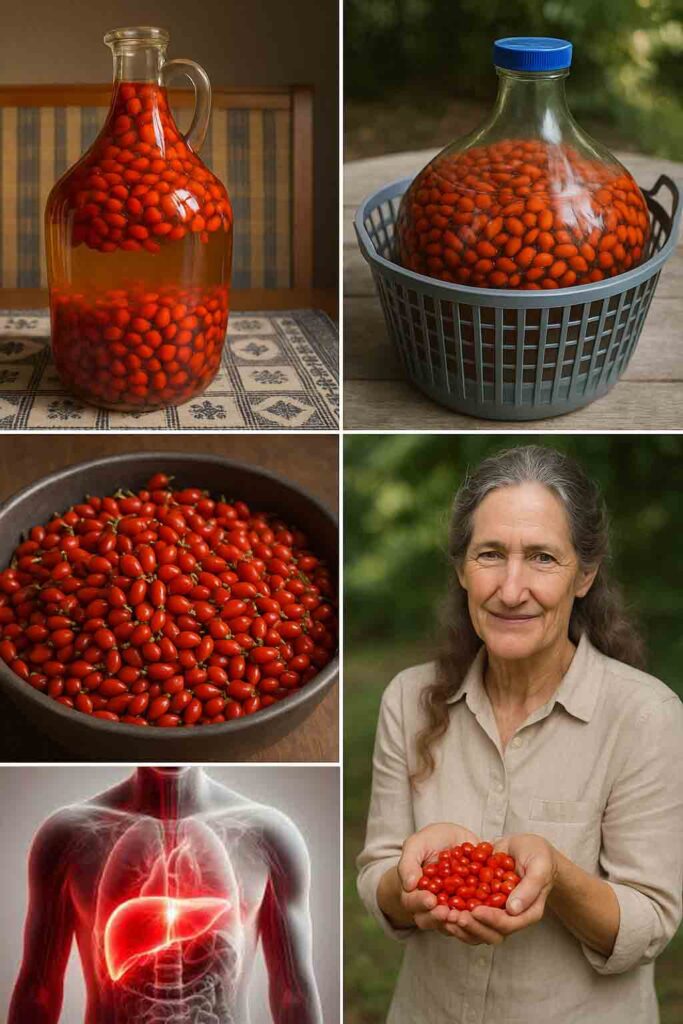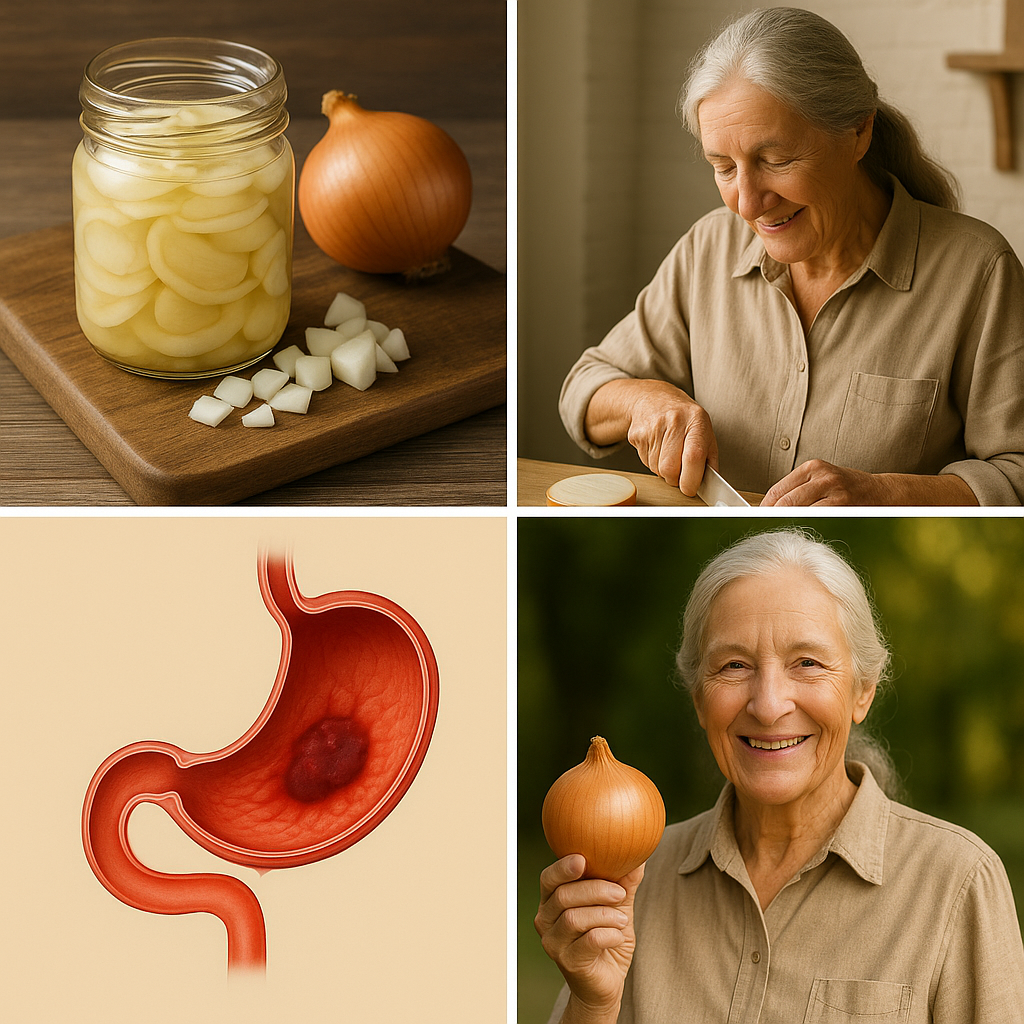✨ Imagine sipping on a golden glass of wine that not only delights your senses but also strengthens your immunity, aids digestion, and floods your body with natural vitamin C. No, this isn’t a miracle from a fancy winery — it’s rosehip wine, and you can craft it in your own kitchen.
This little-known beverage has long been cherished in European folk traditions. Bursting with nutrients and flavor, rosehip wine is more than just a drink — it’s a healing potion wrapped in a fruity bouquet. Whether you’re a lover of natural remedies or a homemade wine enthusiast, this ancient recipe offers something incredibly satisfying.
Let’s unveil the step-by-step process and secrets behind this time-tested treasure.

🍒 What Are Rosehips and Why Are They Magical?
Rosehips are the small, ruby-red fruits left behind after a rose flower drops its petals. But don’t let their delicate appearance fool you — these tiny berries are nutritional powerhouses. Harvested best after the first frost, they become sweeter and softer, offering a deeper flavor and richer nutrients.
Packed with antioxidants, especially vitamin C, rosehips have been used for centuries to boost immunity, improve digestion, and even support cardiovascular health.
And when transformed into wine? The result is pure, elegant magic.
🍇 Ingredients You’ll Need to Craft Rosehip Wine
✔ 3 kilograms of ripe rosehips (freshly picked or dried)
✔ 1 kilogram of natural sugar or honey (for sweetness and fermentation)
✔ 100 grams of fresh brewer’s yeast
✔ 10 liters of pure spring water
✔ 1 lemon (optional, for balancing acidity and flavor)
These simple, accessible ingredients come together to create a luxurious drink that feels anything but ordinary.
🧪 Step 1: Preparing the Rosehips Like a Pro
Start by washing your rosehips carefully to remove dust and tiny bugs. Gently crush them using a wooden spoon, pestle, or a blender on a low setting. Crushing helps release the juice and unlocks the aromatic oils and antioxidants inside.
👉 Pro tip: If you want clearer wine, remove the seeds before fermentation — it takes time, but the clarity is worth it.
🥣 Step 2: Creating the Perfect Must (Fermentation Base)
Place your crushed rosehips into a large glass or ceramic container. Sprinkle in the sugar and mix thoroughly. Dissolve the brewer’s yeast in a small amount of warm (not hot) water and add it to the mix. Pour in your 10 liters of spring water gradually, stirring slowly and consistently.
Cover the container with a clean cheesecloth to let it breathe and allow wild fermentation to occur naturally. Set it aside in a warm, dark area for 10 to 14 days. This is where the magic begins.
🍾 Step 3: Monitoring the Fermentation Dance
Each day, stir your mixture gently with a wooden spoon to encourage fermentation and prevent unwanted mold. Look out for the telltale signs of active fermentation — gentle bubbles rising, a slightly sour aroma, and a foamy surface.
After two weeks, strain the mixture carefully through cheesecloth or a fine sieve to separate the liquid from the solids.
🍶 Step 4: Let It Mature Gracefully
Transfer your fragrant, freshly fermented wine into a sterilized glass demijohn or wine barrel. Secure it with an airlock to allow carbon dioxide to escape while keeping air out.
Place your wine in a cool, dark location and let it rest and mature for at least 6 to 8 weeks. This aging phase refines the flavor, deepens the aroma, and smooths the texture.
🍷 Step 5: Bottle the Beauty
When the waiting is over, strain the wine once more to remove any sediments. Pour it into clean, sterilized glass bottles, seal them tightly, and store them in a pantry or cellar at 10–15°C (50–59°F).
Now the wine is ready — but here’s the secret: the longer it sits, the richer and smoother it becomes.
🌿 Health Benefits You Can Taste
✅ Immune Boosting Power – Thanks to vitamin C and antioxidants, rosehip wine can support your body’s natural defenses.
✅ Digestive Support – It’s not just delicious; it gently encourages a healthy gut.
✅ Natural Energy Lift – A glass in the evening can leave you feeling recharged and revitalized.
✅ Heart-Friendly Flavonoids – These compounds promote better circulation and cardiovascular wellness.
Unlike commercial wines filled with additives, homemade rosehip wine retains all the raw goodness and healing power of nature.

🌟 Tips to Perfect Every Sip
✔ Pick rosehips after the first frost for extra sweetness
✔ Avoid using metal containers — stick to glass, ceramic, or food-grade plastic
✔ Want a spiced note? Add a cinnamon stick or a few cloves during fermentation
✔ Prefer it sweeter? Substitute sugar with a few tablespoons of raw honey
🍂 Why Rosehip Wine Deserves a Place on Your Table
It’s more than a drink. It’s a ritual. A slow, mindful process that connects you with nature, tradition, and wellness. Every bottle tells a story of patience, healing, and joy — something no store-bought wine can ever offer.
Whether you enjoy it warm by the fireplace or chilled on a quiet evening, rosehip wine is a heartwarming, health-giving pleasure. It’s the kind of experience you’ll want to share with loved ones, sip by sip.
So why not give it a try? Your body will thank you. And your taste buds will fall in love.
🍷✨ Start your batch today — and uncork a world of flavor and vitality in just a few weeks.


